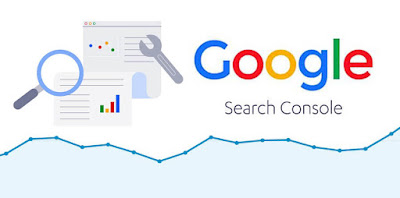Google Search Console and Verification Methods
GOOGLE SEARCH CONSOLE AND VERIFICATION METHODS
What is Google Search Console?
Google search
console is a free service provided by Google to monitor a website's overall health and performance. It helps in the site’s visibility and improves search
ranking. Google search console is indispensable for publishers and search
marketing professionals. It offers an overview of the search performances and
user experience to web owners to help them improve their sites and generate more
traffic. Google console also helps Google communicate with web owners.
Search Console
offers tools that helps in the following actions:
- It confirms that Google can find and crawl your site.
- It helps in the submission of a sitemap
- It helps in the page indexing of new or updated content.
- It helps add robot text.
- It examines the site links to your website.
- It informs you about a manual action penalty.
Sitemap is an XML document that contains all related URLs in a
website. The size of a sitemap is less than 10 MB. A single sitemap can contain
up to 50000 URLs. A sitemap contains the frequency changes, last modified date,
priorities of the URLs etc.
Syntax: website
URL/sitemap.xml
There are two different types of sitemaps- HTML and XML. The HTML format is more easily understandable
for humans whereas the XML format is easier for Google to crawl.
What are the features of the Google search console?
- It helps in the monitoring indexing and crawling of a webpage.
- It identifies and fixes errors.
- It gives an overview of search performances.
- It helps web owners in requesting new or updated pages.
- It reviews the internal and external links.
The search console enables SEO activities in a
controlled form. It helps us to easily target a particular country, specified
date etc. it also helps to find issues regarding device compatibility, mobile
compatibility and browser compatibility.
Verification Methods
To get started, you
have to access the Google Search Console dashboard and open ‘property list’ and
click ‘Add property’. When verifying a site the user has to choose between Domain
and URL-prefix. Most of the domains registered with Google are
auto-verified.
There are mainly 5
methods to verify a site-
- HTML file upload
- Meta Tag
- Google Analytics
- Tag Manager
- Domain Name Provider
HTML File Upload
- This verification method is the recommended method.
- Add your site to Google Search Console and download an HTML verification file.
- The downloaded file should then be uploaded to your website.
- Then return to Google Console and verify.
HTML Tag
- The meta tag can be found under the ‘other verification methods’ section in Google Console.
- The copied meta tag should be pasted to your website’s home URL.
- The meta tag should go in the <head> section, before the <body> section and save.
- Finish the verification process by clicking the verify button on Google Console.
Google Analytics
You can quickly verify
your site using Google Analytics if you already have the asynchronous tracking
code for Google Analytics placed on your website.
- This tracking code should be pasted in the <head> section of your page.
- Then verify your page on Google Console.
Google
Tag Manager
- Google Tag Manager is used in this method.
- Tag manager is shown as a container snippet and it is used to verify the ownership.








Comments
Post a Comment